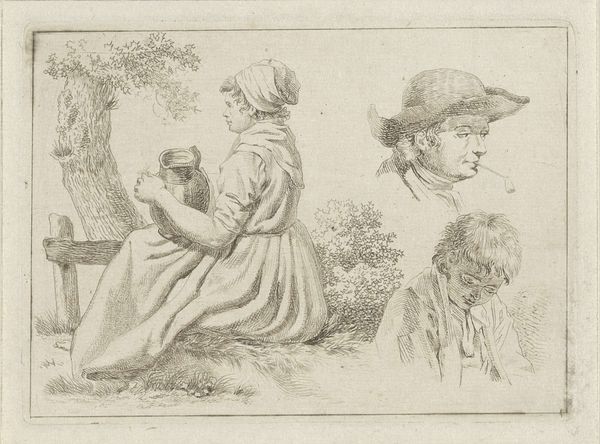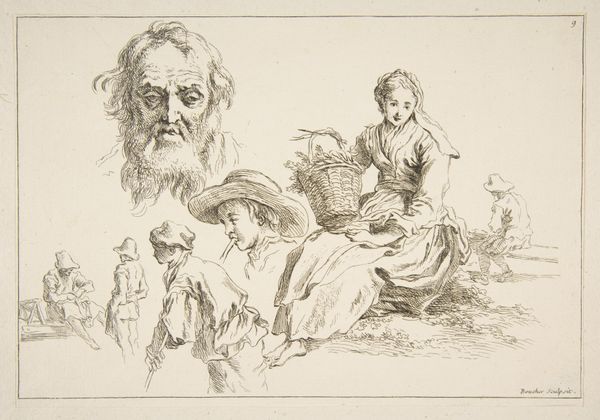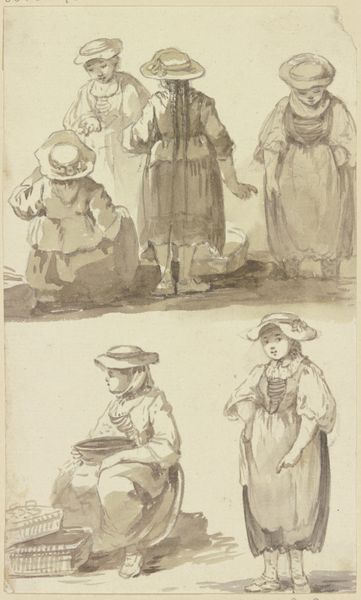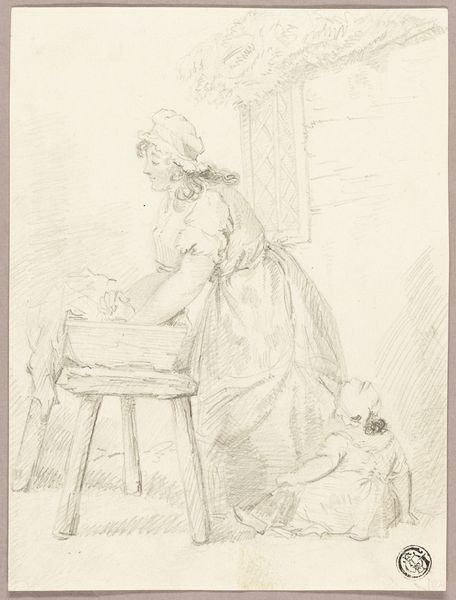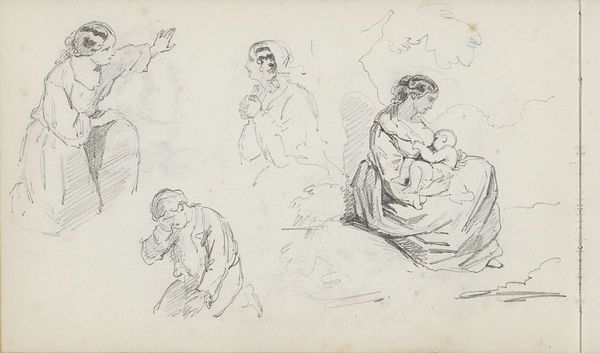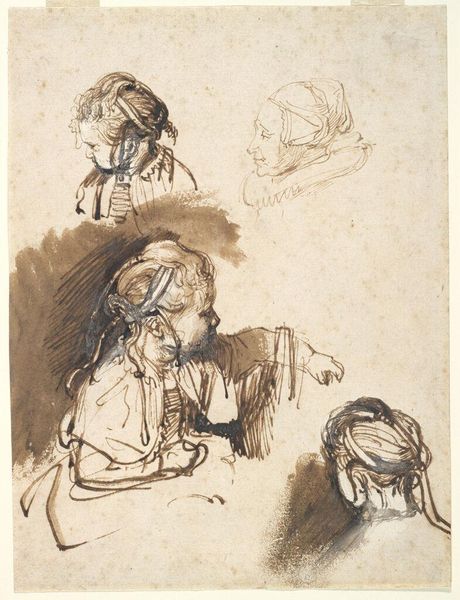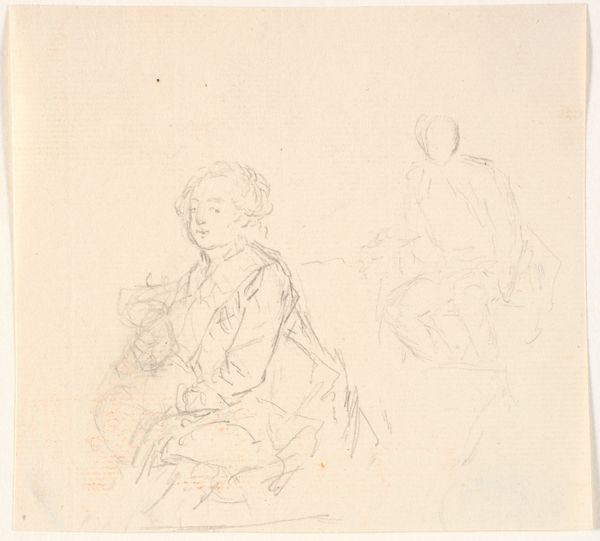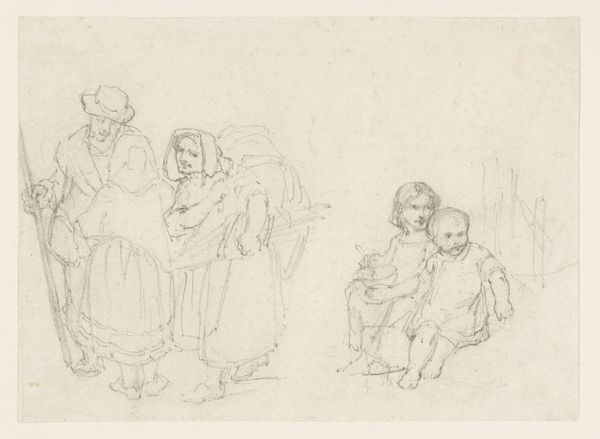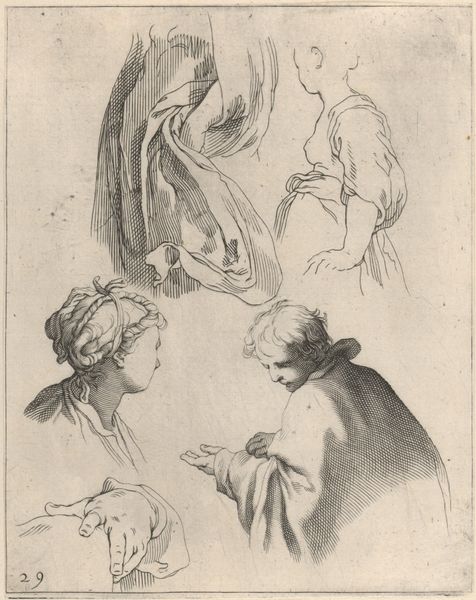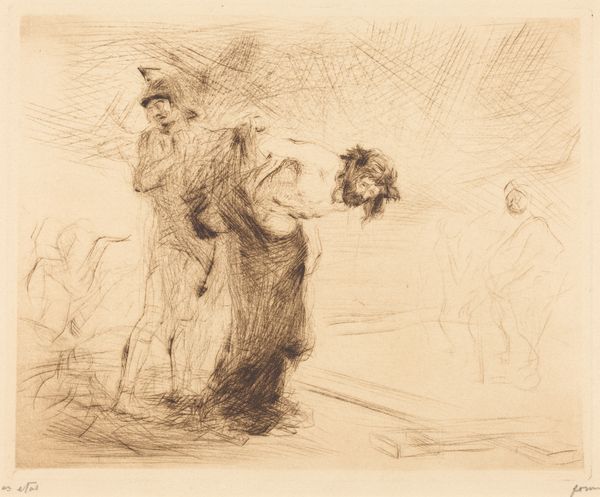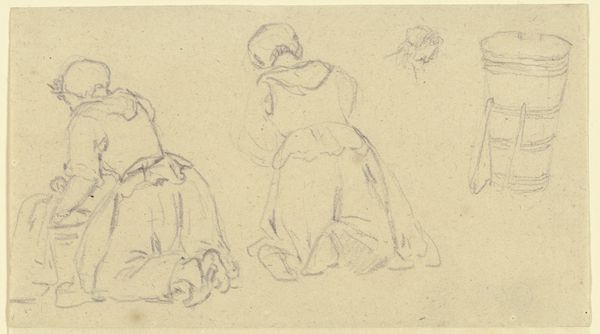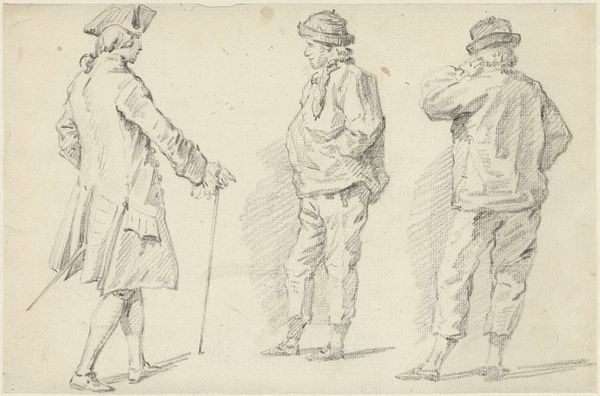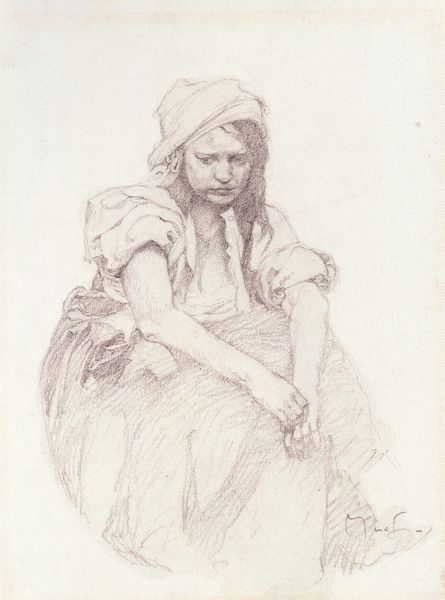
Zittende vrouw met schenkkan, portret van een man met pijp en een jongen 1788 - 1849
0:00
0:00
drawing, pencil
#
portrait
#
drawing
#
pencil sketch
#
pencil
#
genre-painting
Dimensions: height 108 mm, width 151 mm
Copyright: Rijks Museum: Open Domain
Curator: I'm struck by the quiet intimacy captured in this pencil drawing by Johan Christiaan Willem Safft, titled "Zittende vrouw met schenkkan, portret van een man met pijp en een jongen". It was created sometime between 1788 and 1849. Editor: There’s a definite sense of melancholic simplicity. The use of pencil really lends itself to the everyday, a mundane quality underscored by the presentation of what looks like ordinary people caught in quotidian moments. Curator: Absolutely. Let's look at the materiality – the very use of pencil suggests a certain accessibility, both for the artist and, potentially, in representing the lives of working people. Safft’s choice downplays grandeur, favoring a straightforward mode of production, emphasizing the manual labor inherent in creating art. The drawing style focuses more on capturing raw human forms than on idealization, hinting at the real socio-economic circumstances of the sitters, and possibly speaks to shifting power dynamics within portraiture during the period. Editor: It is difficult not to see their working-class existence subtly highlighted. Take, for instance, the woman with the jug. Notice how her pose—slightly hunched, focused solely on her work—speaks volumes about the role and the labor, literally, that women played in 18th and 19th-century society. I find the visual placement alongside the two male figures really underlines potential imbalances in social hierarchies, gendered labor, and possibly even ageism through the figure of the boy with a similar disposition. Curator: I agree; considering Safft's historical positioning, his method becomes an explicit choice to democratize representation through the act of drawing itself. Pencil was, comparatively speaking, readily available. I feel his decision serves as a deliberate commentary on class and artistic production. It rejects opulence for raw, honest representation. Editor: It feels very subversive considering the art market at that time was largely for an exclusive audience. Thinking about it, one might even read a sense of gentle activism into how Safft frames the ordinary, pushing the everyday experiences of different genders and age groups to the forefront. This piece sparks many important discussions! Curator: Agreed. Seeing this drawing gives insights into not only past material constraints and artistic decisions, but offers avenues for broader examination of art’s relationship to culture. Editor: For me, looking through a lens that acknowledges intersectional themes gives fresh perspective to otherwise seemingly 'simple' or genre drawings. They truly can act as historical agents, providing windows into identity and the societal complexities of the era.
Comments
No comments
Be the first to comment and join the conversation on the ultimate creative platform.
